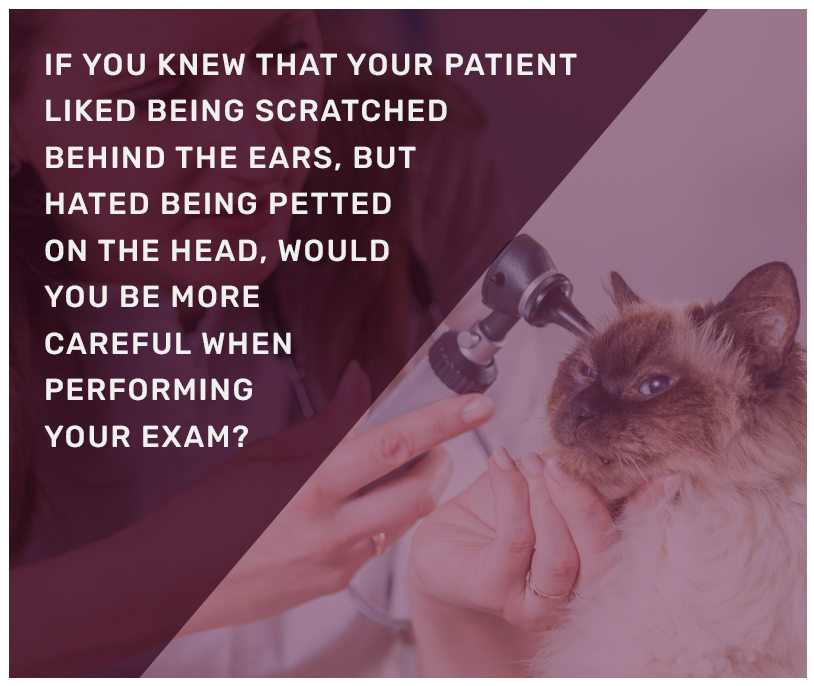Page14
touch
Did you know that cats have a higher density of sensory neurons and therefore more sensitive skin than rabbits? Did you know that their whiskers are specialized sensory hairs? Did you know that for both dogs and cats the paws and areas around their mouth and head are especially sensitive?
Touch can be a very positive experience and influential aspect of the HAB, especially between the pet and the pet owner. However, individuals vary in how much touch they enjoy and tolerate. We must be aware of how frequently we are touching their most sensitive areas while they are being examined or during hospitalization episodes. Ears, eyes, around the neck, toes/paws for nail trimming, etc. are all areas we touch frequently and may be sensitive.
Animals can develop learned sensitivities to any body part and have individual preferences. A pet owner may know that a dog loves to be scratched behind the ears, but hates to be petted on the head.

Asking questions
In step 2, we talked about asking questions as a part of your routine. Remember to ask good questions, such as: How does your pet react to being petted? If you knew that your patient liked being scratched behind the ears, but hated being petted on the head, would you be more careful when performing your exam? In being more aware of the individual patient’s sensitivities, would you be able to lessen the stress on the animal, and therefore the client/pet owner? How can you change your behavior to make this a more positive experience? If the pet and owner had a positive experience do you think that would influence their chance of returning?

